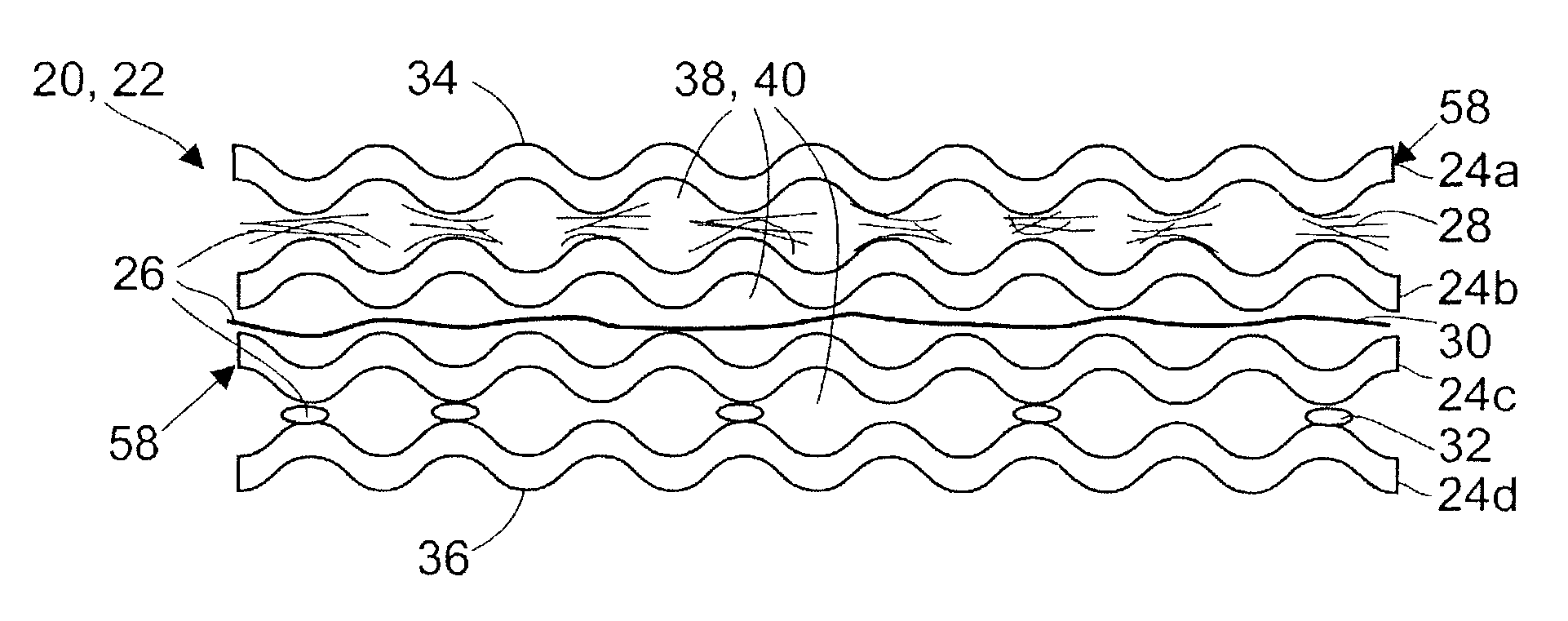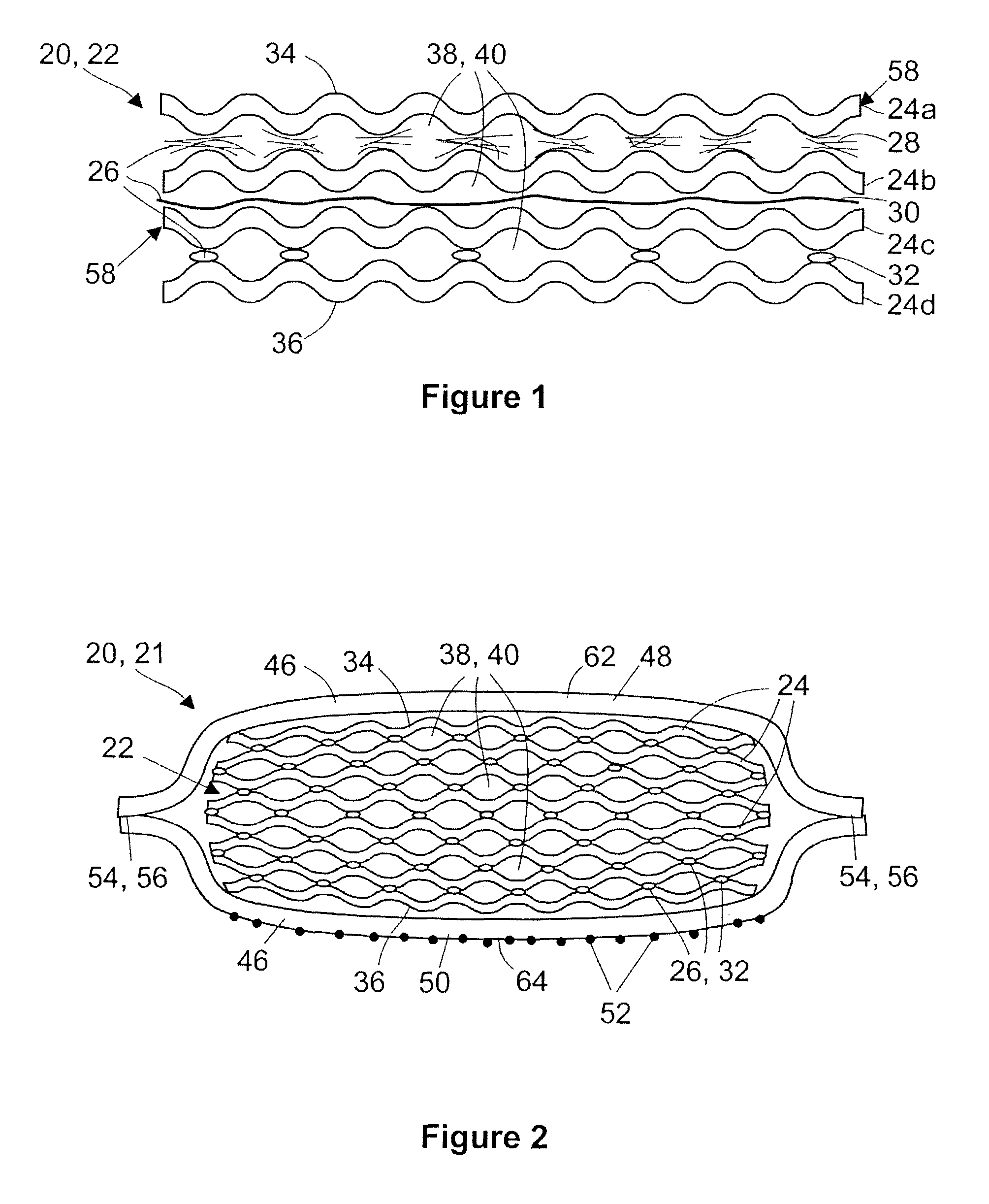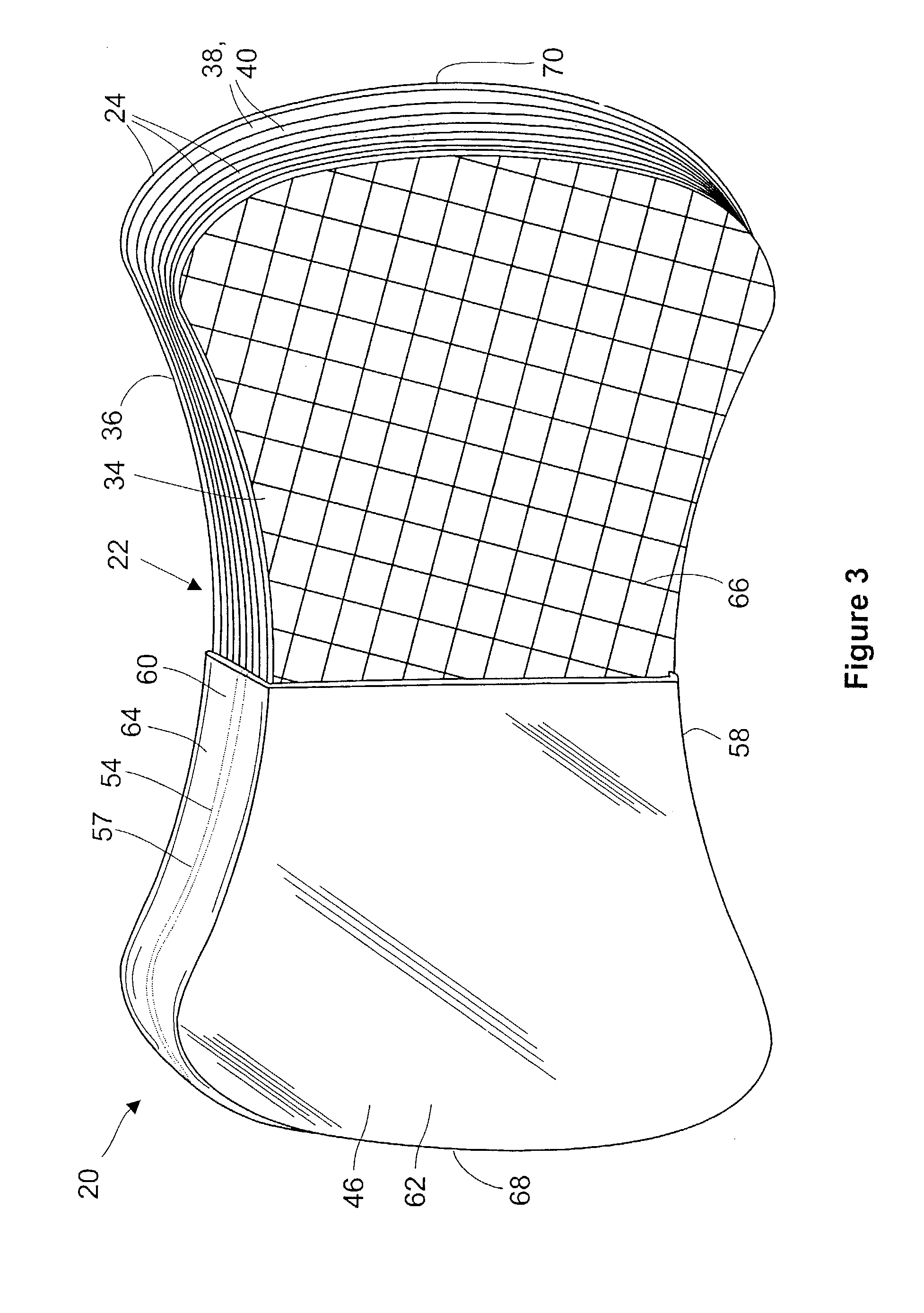Sponge-like pad comprising paper layers and method of manufacture
a technology of paper layers and sponges, which is applied in the direction of carpet cleaners, weaving, cleaning equipments, etc., can solve the problems of unsuitable for some applications where a disposable, high cost of sponges, and high cost of regenerated cellulose, so as to achieve high pore volume, high wet compressed bulk (wcb) value, and high pore volume
- Summary
- Abstract
- Description
- Claims
- Application Information
AI Technical Summary
Benefits of technology
Problems solved by technology
Method used
Image
Examples
example no.1
Example No. 1
[0196]A sponge substitute according to the present invention was made by bonding plies of uncreped through-air dried tissue together. The tissue was made substantially according to Example 4 of commonly owned copending Canadian published application having Application No. 2,241,820, which claims priority to copending U.S. patent application Ser. No. 08 / 912,906, “Wet Resilient Webs and Disposable Articles Made Therewith,” filed Aug. 15, 1997 by Chen et al. The tissue so made had a basis weight of 30 gsm and comprised 100% Temcel Tembec 525 / 80 spruce BCTMP pulp, with Kymene 557-LX wet strength agent of Hercules Chemical (Wilmington, Del.) added to the fibrous slurry prior to web formation, at a dosage of 26 kg Kymene per ton of dry fibers (kg / ton). The through-drying fabric used to mold the three-dimensional sheet was a Voith Fabrics (formerly Lindsay Wire, Appleton, Wis.) T-116-3 TAD fabric. The transfer fabric (used to transfer the embryonic web from the forming fabric ...
example no.2
Example No. 2
[0224]High molecular weight isotactic polypropylene (Achieve 3915, Exxon Chemical Co) was used in a pilot meltblown facility to make a polymer net by meltblown fiberization. The polypropylene was extruded through a meltblown die at 485° F. on a porous Teflon conveyor web with an underlying vacuum. The web speed was 10 ft / min. A meltblown polypropylene net with a basis weight of 98 gsm was generated by adjusting the temperature, air pressure, and the distance between the blown head to the forming table, as well as the flow rate of the polymer.
[0225]The polypropylene net was then bonded with a pad comprising bonded tissue layers according to the present invention. Bonding of the polypropylene net to the stack was done with a hot melt adhesive (NS-5610, National Starch Chemical Company) using a swirl spray application at 320° F. with a hot melt applicator. The wash pad surface covered with polypropylene net showed excellent adhesion and performed well in scrubbing (high sc...
PUM
| Property | Measurement | Unit |
|---|---|---|
| Surface Depth | aaaaa | aaaaa |
| diameter | aaaaa | aaaaa |
| Surface Depth | aaaaa | aaaaa |
Abstract
Description
Claims
Application Information
 Login to View More
Login to View More - R&D
- Intellectual Property
- Life Sciences
- Materials
- Tech Scout
- Unparalleled Data Quality
- Higher Quality Content
- 60% Fewer Hallucinations
Browse by: Latest US Patents, China's latest patents, Technical Efficacy Thesaurus, Application Domain, Technology Topic, Popular Technical Reports.
© 2025 PatSnap. All rights reserved.Legal|Privacy policy|Modern Slavery Act Transparency Statement|Sitemap|About US| Contact US: help@patsnap.com



